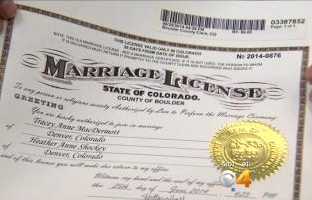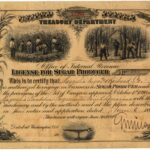Why do we have government-issued marriage licenses?
That question might seem like it belongs in a history book or a late-night debate, but stick with me—because it connects directly to how many of us run our businesses today.
A license is a formal authorization granted by a government or other regulatory authority that gives an individual or entity the legal right to engage in a specific activity that would otherwise be prohibited. Essentially, it is not a right you inherently possess but a permission that must be obtained. For many activities—particularly those that impact public safety, commerce, or the legal system—you are not free to “practice” without first securing a license. For example, you cannot legally drive a car, sell alcohol, or operate a gun store without obtaining the appropriate government-issued license. These licenses serve as regulatory tools, often intended to ensure competence, safety, and accountability in areas deemed critical to society.
Originally, marriage licenses were tools of social control. At one time, it was forbidden to have sex or to have kids without a marriage license. In the U.S., their use gained traction in the 19th and 20th centuries, partly to prevent interracial marriage and partly as a mechanism for the state to regulate inheritance and legitimacy of children. Over time, those motivations faded, but the licenses remained. They evolved into gatekeepers for tax benefits, legal protections, and government entitlements—even though the cultural and moral foundations for requiring them have long since eroded.
You no longer need a marriage license to cohabitate, raise kids, or even adopt children. And today, marriage is available to same-sex couples in the U.S., showing how much our societal norms have changed. Yet, the licensing structure remains in place, not because it’s still solving the problem it was designed for but because it has simply become the default.
And that’s where this turns into a business lesson.
Many business owners are still “licensing” old practices—procedures, policies, or even entire business models—that made perfect sense at one time but are now outdated. They’re kept around out of habit, inertia, or fear of change. Think of things like:
- Requiring in-person meetings when Zoom could do just fine.
- Keeping legacy pricing models that no longer align with your value.
- Following processes built around limitations that no longer exist.
This is a classic example of what economists call “path dependency”—where decisions are made not because they’re the best now but because they were best at some point in the past, and we’re stuck in the groove.
One way to break free from this rut is by applying tools like the Business Model Canvas. This framework helps you question every aspect of your business—your customer segments, channels, value propositions, key resources, and more. It’s designed to encourage fresh thinking and disrupt business-as-usual assumptions.
As with marriage licenses, the key takeaway is to ask: Does this still serve the purpose it was created for?
If not, why are you still doing it?
If you’ve ever found yourself saying, “Well, that’s just how we’ve always done it,” you might be running your business like the government runs marriage licenses—anchored to outdated ideas that no longer align with reality.
By shedding legacy constraints, you create more space for agility, relevance, and innovation.
So here’s a challenge: Pick one thing in your business this week that feels clunky, outdated, or unnecessary. Then ask yourself, “Why do we do this?” If you can’t find a valid answer, it may be time to sunset that old practice.
Are you still doing things in your business that no longer make sense to continue?












